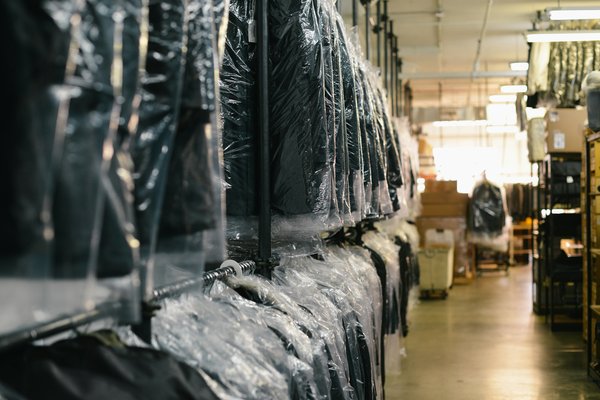Two carcinogens used in various industrial settings and in consumer products were banned Monday by the Environmental Protection Agency.
The EPA's new risk management rules ban all uses of trichloroethylene, TCE, and many commercial and consumer uses of perchloroethylene, or PCE. The chemicals are nonflammable, chlorinated solvents that can be found in cleaning products and dry cleaning processes, and they are linked to a variety of cancers, the EPA said.
MORE: Leaded gas led to mental health issues for millions of Americans, study finds
All uses of TCE will be banned over time, with the majority of identified risks being eliminated within one year, and the EPA is implementing a 10-year phase-out for the use of PCE in dry cleaning. Safer alternatives are readily available for the majority of TCE and PCE uses, according to the EPA.
Worker protections will be required for any remaining uses of PCE, under the Toxic Substances Control Act. These include using it as an energized electrical cleaner, for asphalt testing and recovery in labs, to make refrigerants and other chemicals, and for vapor degreasing.
The solvents often serve as alternatives for each other, too, the EPA said. For some uses of TCE, PCE can be substituted safely as long as workplace protections are in place.
"It's simply unacceptable to continue to allow cancer-causing chemicals to be used for things like glue, dry cleaning or stain removers when safer alternatives exist," Michal Freedhoff, assistant administrator for the Office of Chemical Safety and Pollution Prevention, said in a statement. "These rules are grounded in the best-available science that demonstrates the harmful impacts of PCE and TCE."
These protections align with President Joe Biden's Cancer Moonshot initiative to significantly reduce cancer deaths. The Biden administration acknowledged the decades of advocacy work by parents who lost children to cancer caused by exposure to toxic chemicals — like Anne Anderson, whose 3-year-old son Jimmy got leukemia and died after being exposed to TCE in drinking water in the industrial city of Woburn, Massachusetts. There's also Jerry Ensminger, a retired U.S. Marine Corps master sergeant whose 9-year-old daughter Janey died from leukemia after being exposed to the drinking water at Camp Lejeune in North Carolina, which was contaminated with TCE, PCE and other organic solvents.
Here's what to know about the two newly-banned chemicals, including what they're used for and the risks associated with them:
What is trichloroethylene?
TCE is used in cleaning products, furniture care products, degreasers, brake cleaners, sealants, lubricants, adhesives, paints and coatings, and arts and crafts spray coatings. It also is used in the manufacture of some refrigerants.
It is a highly toxic chemical that has been linked to liver cancer, kidney cancer and non-Hodgkin's lymphoma, according to the EPA. It also can cause damage to the central nervous system, liver, kidneys, immune system, reproductive organs and can cause fetal heart defects. Exposure to even tiny concentrations of TCE is associated with these risks.
Though most TCE uses will be phased out within a year, a limited number will be phased out over a longer period, including its use in cleaning parts in aircraft and medical devices, the manufacturing of battery separators and refrigerants and its use in transportation, security and defense systems. These uses will require worker safety protections, including an inhalation exposure limit to reduce long-term workplace exposure by 97%, the EPA said.
The EPA will allow essential TCE laboratory use and proper disposal of TCE wastewater to continue for 50 years.
What is perchloroethylene?
PCE is used in dry cleaning, brake cleaners and adhesives, and in many industrial settings.
It is known to cause liver, kidney, brain and testicular cancers, the EPA said. It also has been linked to neurotoxicity, reproductive toxicity and damage to the kidney, liver and immune system.
The EPA will phase out PCE in dry cleaning over the next decade, with the use of PCE in new dry-cleaning machines becoming prohibited after six months. Discontinuing use of PCE in current machines will vary, with PCE being phased out in older machines before newer ones. Many dry cleaners already have begun to transition away from PCE, the EPA said.
Under the new rule, most companies will need to phase out manufacturing, processing and distribution of PCE for all consumer use sand many uses at industrial and commercial workplaces within three years. There will be strict controls put in place for workplaces that need to continue using PCE, for reasons of national security, aviation and other critical infrastructure, the EPA said.
Follow Franki & PhillyVoice on Twitter: @wordsbyfranki
| @thePhillyVoice
Like us on Facebook: PhillyVoice
Have a news tip? Let us know.


